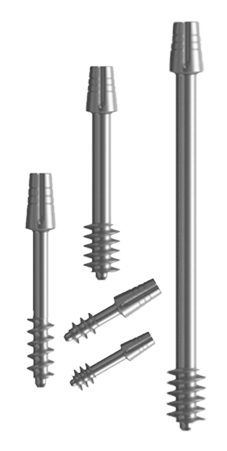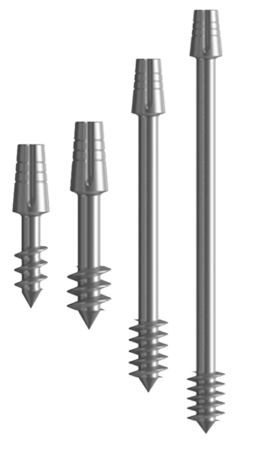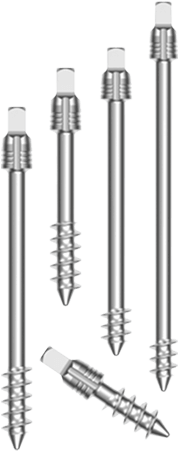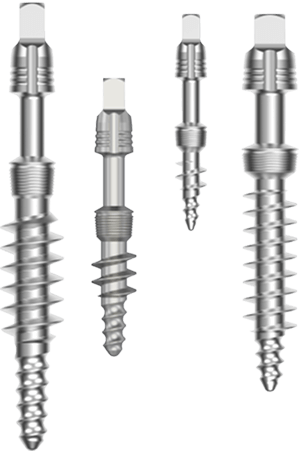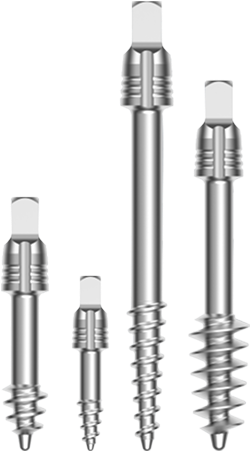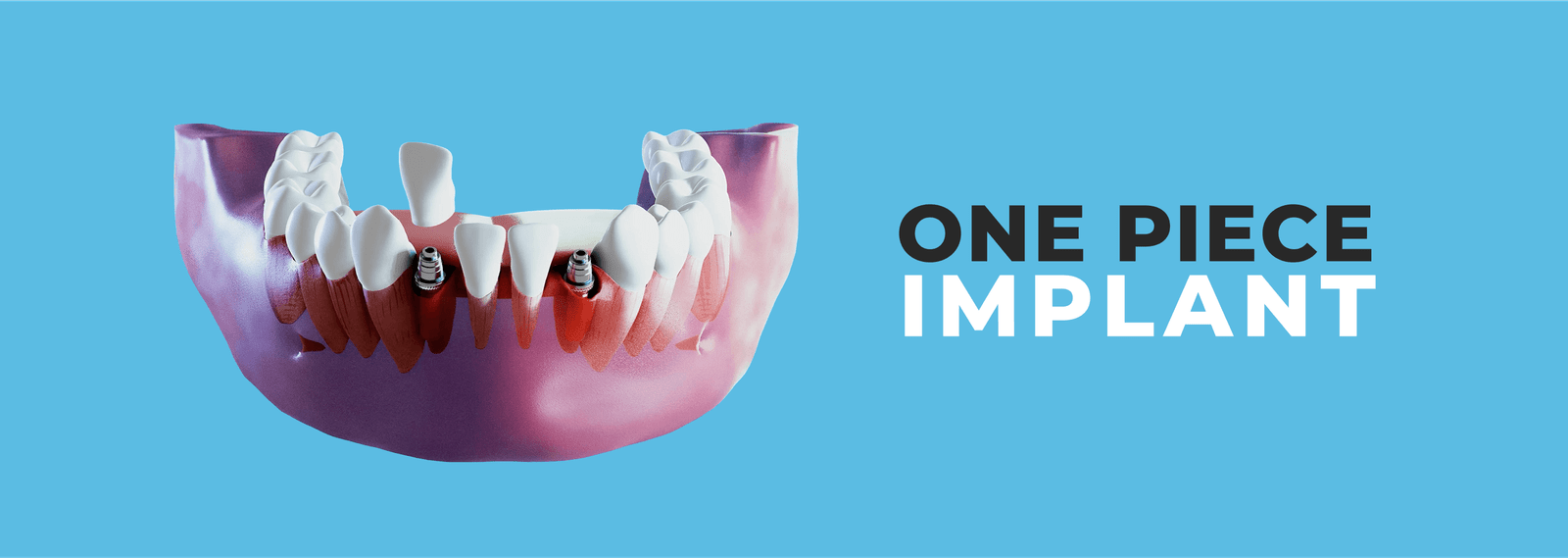
Two Piece Implant
How Do They Work?
How Often Do Dental Implants Need to Be Replaced?
The one piece implant is placed directly into the jawbone in a single surgical procedure. This eliminates the need for a second surgery to place the abutment.
Faster Healing: The simplified design of one piece dental implants often results in quicker healing times, allowing patients to enjoy their new teeth sooner.
Improved Aesthetics: One-piece implants can provide a more natural-looking result, as the crown can be attached directly to the implant without the need for a visible abutment.
Advantages of Two Piece Dental Implants

Versatility
The two-piece design allows for greater flexibility in customizing the final restoration. The abutment can be adjusted to accommodate different crown or bridge designs, ensuring a natural-looking and comfortable fit.

Customizability
Two piece implants system provides more options for customizing the appearance of the final restoration, including the shape, size, and color of the crown or bridge. This can be particularly important for patients who want their teeth to blend seamlessly with their natural teeth.

Flexibility
Two piece tooth implants can be used in a wider range of clinical situations, including cases with limited bone volume or challenging anatomical conditions. The separate components allow for more precise placement and adjustment, increasing the chances of successful treatment.

Durability
We use top class medical-grade materials to fabricate these 2-piece dental implants. The fixture is typically made from titanium, which is biocompatible and highly durable. The abutment can be made from various materials, including titanium or zirconia, depending on the specific needs of the patient.

Aesthetics
These dental implants can provide a highly aesthetic result, restoring both the function and appearance of missing teeth. The final restoration can be designed to match the shape, size, and color of the patient’s natural teeth, resulting in a beautiful and confident smile.

Comfort
2-piece dental implant s are generally very comfortable for patients. The abutment can be designed to provide a secure and stable platform for the crown or bridge, reducing the risk of discomfort or irritation.

Long-Term Benefits
Two-piece implants can offer significant long-term benefits, including improved oral health, enhanced chewing function, and improved self-esteem. By restoring missing teeth, implants can help prevent the development of other oral health problems, such as gum disease and tooth decay.
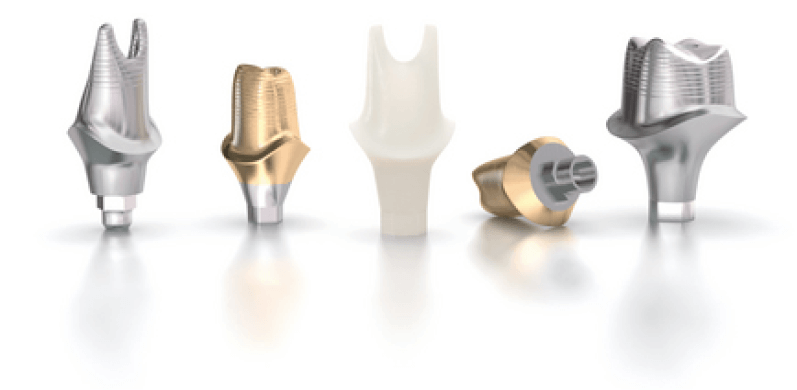
Everything You Need to Know
Frequently Asked Questions
A two-piece implant is a type of dental implant that consists of two separate components:
Fixture: This is the part that is surgically placed into the jawbone. It typically has a threaded design to secure it firmly in place.
Abutment: This is the connecting piece that attaches the crown or bridge to the fixture. It can be a separate component that is screwed onto the fixture or a part of the crown itself.
Two-piece implants offer versatility and customization, allowing for different types of restorations to be attached. They are commonly used in various dental procedures, including dental implants, bridges, and dentures.
An abutment is a structure that serves as a support for a dental restoration, such as a crown, bridge, or implant. It’s typically a metal post or screw that’s surgically placed into the jawbone.
Here’s how it works:
Implant abutment: This type connects a dental implant to a crown or bridge.
Bridge abutment: This type supports a bridge, which replaces missing teeth.
Abutments provide a stable foundation for restorations, ensuring they stay securely in place and function properly.
Yes, it’s possible to have a tooth extracted and an implant placed on the same day. This procedure, known as immediate implant placement, can be performed in certain cases where the bone quality and quantity are adequate.
However, to confirm whether you are an ideal candidate, it is important to consult an experienced dentist. Factors such as the type of tooth being extracted, the condition of your jawbone, and your overall health will be considered.
Yes, you can get temporary teeth while waiting for implants. These temporary teeth are often referred to as “immediate dentures” or “provisional restorations.” They serve as a cosmetic solution during the healing process after tooth extraction or while your implants are integrating into your jawbone. They can be fixed or removable, depending on your specific situation and the dentist’s recommendation.
Type 2 implant placement is a surgical procedure used to anchor dental implants into the jawbone. In this case, the implant is placed within 1-2 months after tooth extraction. It’s specifically designed for patients who have lost a significant amount of bone mass in the area where the implant is to be placed.
In this procedure, a small piece of bone graft is surgically inserted into the jawbone, providing a foundation for the implant. Once the bone graft has healed and integrated with the jawbone, the implant can then be placed into the newly formed bone. This method is often necessary to ensure a stable and long-lasting dental restoration.
People who should not get dental implants include:
- Those with uncontrolled diabetes.
- Heavy smokers, as smoking can hinder healing.
- Individuals with severe gum disease or periodontal disease.
- People with certain bone disorders or jaw conditions.
- Those undergoing radiation therapy or chemotherapy.
- Individuals with blood clotting disorders or immune system problems.
It’s essential to consult with a dentist to determine if dental implants are suitable for your specific situation.

